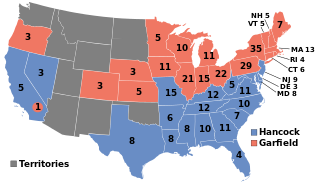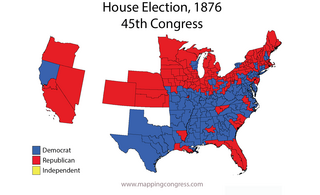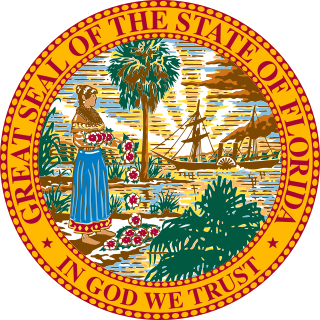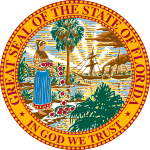
The 1876 United States presidential election was the 23rd quadrennial presidential election, held on Tuesday, November 7, 1876, in which Republican nominee Rutherford B. Hayes faced Democrat Samuel J. Tilden. It was one of the most contentious presidential elections in American history. Its resolution involved negotiations between the Republicans and Democrats, resulting in the Compromise of 1877, and on March 2, 1877, the counting of electoral votes by the House and Senate occurred, confirming Hayes as President. It was the second of five U.S. presidential elections in which the winner did not win a plurality of the national popular vote.

The 1880 United States presidential election was the 24th quadrennial presidential election, held on Tuesday, November 2, 1880, in which Republican nominee James A. Garfield defeated Winfield Scott Hancock of the Democratic Party. The voter turnout rate was one of the highest in the nation's history. Garfield was assassinated during his first year in office, and he was succeeded by his vice president, Chester A. Arthur.

Samuel Jones Tilden was an American politician who served as the 25th governor of New York and was the Democratic nominee in the disputed 1876 United States presidential election.
The 1878–79 United States House of Representatives elections were held on various dates in various states between June 3, 1878 and September 3, 1879. Each state set its own date for its elections to the House of Representatives before or after the first session of the 46th United States Congress convened on March 18, 1879. Elections were held for all 293 seats, representing 38 states. This was the last election cycle that at least one state held its regular congressional election in an odd-numbered year.

The 1876–77 United States House of Representatives elections were held on various dates in various states between June 5, 1876 and March 13, 1877. Each state set its own date for its elections to the House of Representatives before the first session of the 45th United States Congress convened on October 15, 1877. The size of the House increased to 293 seats with the addition of the new state of Colorado.

The Electoral Commission, sometimes referred to as the Hayes-Tilden or Tilden-Hayes Electoral Commission, was a temporary body created by the United States Congress on January 29, 1877, to resolve the disputed United States presidential election of 1876. Democrat Samuel J. Tilden and Republican Rutherford B. Hayes were the main contenders in the election. Tilden won 184 undisputed electoral votes, one vote shy of the 185 needed to win, to Hayes' 165, with 20 electoral votes from four states unresolved. Both Tilden and Hayes electors submitted votes from these states, and each claimed victory.

Josiah Thomas Walls was a United States congressman who served three terms in the U.S. Congress between 1871 and 1876. He was one of the first African Americans in the United States Congress elected during the Reconstruction Era, and the first black person to be elected to Congress from Florida. He also served four terms in the Florida Senate.

Jesse Johnson Finley was a brigadier general in the Confederate States Army during the American Civil War and a member of the United States House of Representatives from Florida, following the reconstruction era. He also served as mayor of Memphis, Tennessee; an volunteer officer in the United States Army during the Second Seminole War; a member of the Arkansas Senate; a member of the Florida Senate; and a Circuit Court Judge in Florida.

Horatio Bisbee Jr. was an American attorney and politician who served as a U.S. Representative from Florida.
The 1880 Democratic National Convention was held June 22 to 24, 1880, at the Music Hall in Cincinnati, Ohio, and nominated Winfield S. Hancock of Pennsylvania for president and William H. English of Indiana for vice president in the United States presidential election of 1880.

The 1876 United States elections were held on November 7. In one of the most disputed presidential elections in American history, Republican Governor Rutherford B. Hayes of Ohio ended up winning despite Democratic Governor Samuel J. Tilden of New York earning a majority of the popular vote. The Republicans maintained their Senate majority and cut into the Democratic majority in the House.
The 1874 United States House of Representatives elections in Florida were held on November 3 for the 44th Congress.

The 1876 United States House of Representatives elections in Florida were held on November 7 for the 45th Congress. These elections were held at the same time as the election for governor and the contentious presidential election, in which Florida was one of four states whose electoral votes were in dispute.

Elections to the United States House of Representatives in Florida were held November 5, 1878 for the 46th Congress.
The 1882 United States House of Representatives elections in Florida were held November 7 for the 48th Congress

The 1880 United States elections occurred during the Third Party System, and elected the members of the 47th United States Congress. Republicans retained the Presidency and took control of the House. An unclear partisan situation prevailed in the Senate. As the first presidential election after the end of Reconstruction, this election saw the first occurrence of the Democratic Party sweeping the Southern United States; the party would carry an overwhelming majority of Southern states well into the 20th century.

Neal Patrick Dunn is an American surgeon and Republican Party politician serving as the U.S. representative for Florida's 2nd congressional district since 2017.

The 2024 United States elections are scheduled to be held on Tuesday, November 5, 2024. During this presidential election year, the President of the United States and Vice President will be elected. In addition, all 435 seats in the United States House of Representatives and 34 of the 100 seats in the United States Senate will be contested to determine the membership of the 119th United States Congress. Thirteen state and territorial governorships and numerous other state and local elections will also be contested.

The 1876 U.S. presidential election occurred at the twilight of Reconstruction and was between Republican Rutherford B. Hayes and Democrat Samuel J. Tilden. After an extremely heated election dispute, a compromise was eventually reached where Hayes would become U.S. President in exchange for the end of Reconstruction and a withdrawal of U.S. federal troops from the South.



















